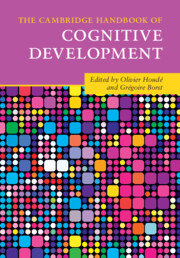Book contents
- The Cambridge Handbook of Cognitive Development
- The Cambridge Handbook of Cognitive Development
- Copyright page
- Contents
- Figures
- Tables
- Contributors
- Introduction
- Part I Neurobiological Constraints and Laws of Cognitive Development
- 1 How Life Regulation and Feelings Motivate the Cultural Mind
- 2 Epigenesis, Synapse Selection, Cultural Imprints, and Human Brain Development
- 3 Mapping the Human Brain from the Prenatal Period to Infancy Using 3D Magnetic Resonance Imaging
- 4 Development and Maturation of the Human Brain, from Infancy to Adolescence
- 5 Genetic and Experiential Factors in Brain Development
- 6 The Brain Basis Underlying the Transition from Adolescence to Adulthood
- Part II Fundamentals of Cognitive Development from Infancy to Adolescence and Young Adulthood
- Part III Education and School-Learning Domains
- Index
- Plate Section (PDF Only)
- References
1 - How Life Regulation and Feelings Motivate the Cultural Mind
A Neurobiological Account
from Part I - Neurobiological Constraints and Laws of Cognitive Development
Published online by Cambridge University Press: 24 February 2022
- The Cambridge Handbook of Cognitive Development
- The Cambridge Handbook of Cognitive Development
- Copyright page
- Contents
- Figures
- Tables
- Contributors
- Introduction
- Part I Neurobiological Constraints and Laws of Cognitive Development
- 1 How Life Regulation and Feelings Motivate the Cultural Mind
- 2 Epigenesis, Synapse Selection, Cultural Imprints, and Human Brain Development
- 3 Mapping the Human Brain from the Prenatal Period to Infancy Using 3D Magnetic Resonance Imaging
- 4 Development and Maturation of the Human Brain, from Infancy to Adolescence
- 5 Genetic and Experiential Factors in Brain Development
- 6 The Brain Basis Underlying the Transition from Adolescence to Adulthood
- Part II Fundamentals of Cognitive Development from Infancy to Adolescence and Young Adulthood
- Part III Education and School-Learning Domains
- Index
- Plate Section (PDF Only)
- References
Summary
Few ideas are in greater need of correction than the common-sense notion that cultures are born exclusively of the human mind and constitute an entire novelty in the history of life. Somewhat distractedly and with the usual high regard that humans reserve for themselves, cultures are frequently thought of as purely human creations. For example, behaviors that result in moral regulation or in social and political organization, as well as activities tied to economical exchanges or the management of illness, are assumed to have been constructed by the grace of standard and explicit human intelligence. The human contemplation of facts, the process of reasoning over those facts, and the consequent knowledge writ large would have been the engines behind the production of cultures. Fine human cognition and sound human reasoning would explain the newness of such phenomena.
- Type
- Chapter
- Information
- The Cambridge Handbook of Cognitive Development , pp. 15 - 26Publisher: Cambridge University PressPrint publication year: 2022
References
- 2
- Cited by



